The iPhone 4 Redux: Analyzing Apple's iOS 4.0.1 Signal Fix & Antenna Issue
by Brian Klug & Anand Lal Shimpi on July 15, 2010 12:28 PM EST- Posted in
- Smartphones
- Apple
- iOS 4
- iPhone 4
- Mobile
In case you haven’t noticed, the iPhone 4’s antenna design has come under considerable scrutiny. In our iPhone 4 review, we investigated the iPhone 4 antenna and came to two conclusions. First, that iOS 4 was displaying signal bars in an overly optimistic manner, compressing the dynamic range of possible signal bars users can see. Second, we identified a worst case signal drop of around 24 dB when the iPhone 4 is cupped tightly in the left hand, covering the black strip and possibly detuning the antennas and adding additional attenuation from the presence of the hand.
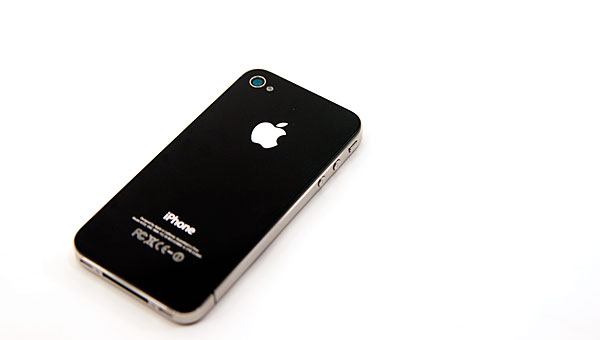
Since those initial measurements, we’ve been working tirelessly to both characterize the problem, fully understand the mechanisms behind it, and report on a number of possible solutions.
The Bars Have Changed
On July 2, Apple released a letter noting that the formula used in iOS 4.0 to calculate how many bars are presented for each signal strength is “totally wrong.” This mirrored our conclusions that the effects of the signal drop were exacerbated in part by the way the iPhone visualizes signal strength - the dynamic range is compressed so much that the 24 dB drop from cupping the phone without a case could make all the bars go away.
They went on to promise that in a future software update they would make bars 1, 2, and 3 taller, and make the bars more “accurate” by displaying 2 bars fewer in certain circumstances.
iOS 4.1 beta rolled around yesterday, and we immediately dove in to find out just how much the bar to signal strength mapping has changed. Update: iOS 4.0.1 final just came out this afternoon and we finished preliminary testing. The signal strength mapping algorithms are identical to the 4.1 beta. The findings in this article apply to 4.0.1 as well as the 4.1 beta.

After updating our devices to the iOS 4.1 beta (and 4.0.1) and making sure our little trick to show signal strength in dBm instead of bars still worked, we set off. Remember last time how I said I drove around town all day with iOS 4.0, testing the phone, and recording signal strength and how many bars were being shown? You guessed it - another update, another evening of driving around. Anand and I did quite our fair share of moving around to get a complete picture of what the new cutoffs are.
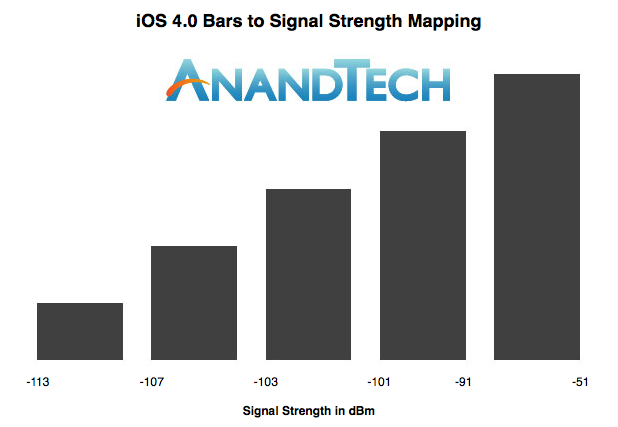
Old Bars
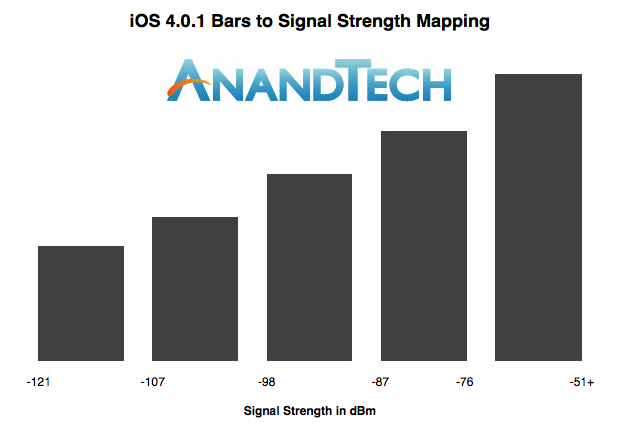
New Bars
The results are conclusive - Apple has dramatically changed the signal strength to signal bar mapping in iOS 4.0.1 and the iOS 4.1 beta, making the dynamic range not only much broader, but the range values for each bar much wider. The range of signals that correspond to bars three and four are the same width, and bar two is only slightly less.
The cutoff value for two bars to one bar remains the same, but every other value has increased. The result is that the worst case drop of 24 dBm no longer makes all the signal bars disappear, but rather two.
AnandTech reader Mike Escoffery, Director of Design and User Experience at Media Platforms, created his own diagram to help compare the old and new way of iOS signal strength reporting:
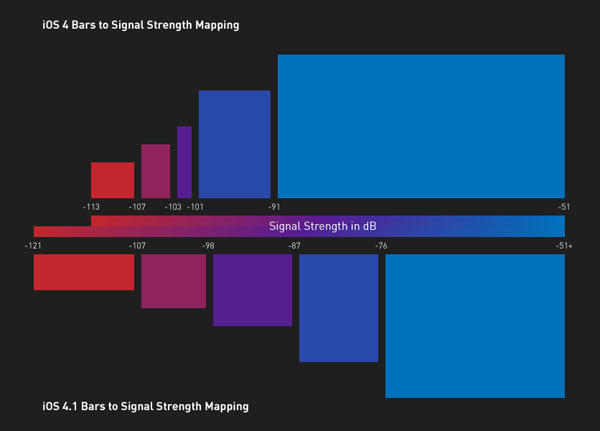
As you can see the old way (top) put far too much weight into the 5th bar of signal. Apple's new approach not only splits it up more reasonably between the 4th and 5th bar (still non-linearly keeping you in the 5th bar if possible) but also extends the range of the lower bars.
This change actually presented itself in our numeric signal strength reports - there’s more dynamic range in these numbers too. Previously, the absolute lowest value any iPhone would report was -113 dBm. With iOS 4.0.1/4.1, the value is now a shockingly low -121 dBm. In the iPhone 4 review, I talked a lot about how although the phone is prone to dropping signal from being held wrong, it was measurably more sensitive in weak signal areas. I was shocked that calls and data worked seemingly unfazed at -113 dBm. It seems as though this increased 8 dBm of range below -113 dBm was meant to show really how much more sensitive the radio stack is - it undeniably is more sensitive. Both Anand and I were able to hang onto calls all the way down at -121 dBm.
We’ve also included a comparison to how the latest version of Android displays signal bars from GSM or UMTS networks below. Thankfully, this didn’t require driving around town all day but rather inspecting the latest version of the Android source code from Google’s own repositories. Android uses an ASU value to compute signal strength, which isn’t anything more than a remapping of dBm to a sane value that’s a bit easier to interpret.
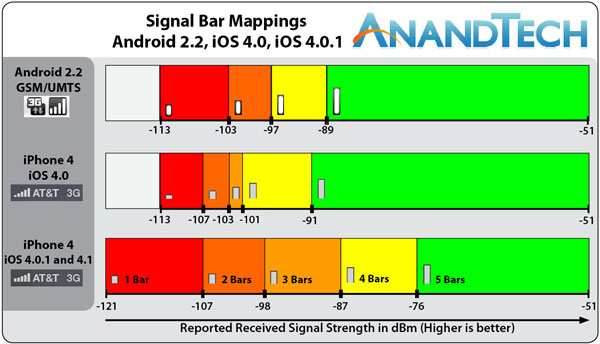
Apple’s mappings have gone from having probably the most compressed dynamic range among handset vendors to less compressed than Android.
While the software update obviously does not and cannot address the design of the antenna itself - or make the drop from holding the phone any less - it does change the way the issue is perceived among users. The result is that most iPhone users will see fewer bars disappear when they hold the iPhone 4 in a bare hand. The side effect is that the iPhone now displays fewer bars in most places, and users that haven’t been reporting signal in dBm will time see the - perhaps a bit shocking - reality of locations previously denoted as having excellent signal.
Interestingly enough, Apple has indeed changed the heights of bars 1, 2, and 3. They’re taller, and the result is that the relative heights are no longer linear, but rather a tad exponential looking. It’s a mind trick that Apple no doubt hopes will make the signal look better. If the bars are taller, they must denote stronger signal, right?
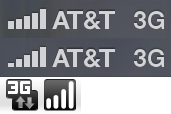
From top to bottom: iOS 4.1, iOS 4.0, Android 2.2
The reality is that Apple likely wants to deflect at least some of the initial backlash AT&T will face for reporting the signal bars without any concessions. Concessions that used to make coverage look better than it really is. Regardless of how tall the bars are, there are still going to be fewer of them virtually everywhere. Interestingly enough, while bars 1 and 2 are the most changed, their respective cutoffs are virtually unchanged.
While I was testing iOS 4.0.1, I told Anand that the signal reporting lie that started with the iPhone 3G had been removed entirely. That iOS 4.0.1 would potentially show the reality of AT&T’s coverage to iPhone users. With 4.0.1 users looking at signal bars will get a much more realistic view of how signal is changing.
We tested the iOS 4.1 beta on iPhone 3GSes as well, and found the mappings to be the same there as well.










146 Comments
View All Comments
canontk - Thursday, July 15, 2010 - link
I'm not trying to defend Anand and his love for Apple, but you must understand this site started from his love for computers and things technical. I've been coming to this site for over 12 years now and I dislike seeing the constant Apple articles just as much as the next guy, but I respect Anand and most of his staff.You'll just have to learn to deal with it or find another site. The problem is that most sites are big on Apple news and reviews just to get the traffic. I don't think this is why Anandtech posts Apple news and reviews, I think it's because they really like their devices.
We get good information from their interests, we just have to hope some of those are the same as ours.
jonup - Thursday, July 15, 2010 - link
I think what you said is worrisome(?). Fact is that Apple has a marginal presence in the cell phne market (though growing at very fast pace) but they products receive dispropotional presence on review site, even on sites like AT where cell phones are not the core content.Apple is getting PR (intential or not) that sometimes even I want to get an iPhone. I almost installed a Hachintosh a few months ago. I meen I will never (!?) get an iPhone cause they do not make them in the form factor I prefer (small, light, and durable).
SunSamurai - Thursday, July 15, 2010 - link
Marginal presence? Apple has a 15-20% share in the smart phone industry. How is that marginal?They dont make ANY smartphone in a small light form factor. What in the h3ll are you talking about and how does that have anything to do with the iphone vs any other smart phone?
jonup - Friday, July 16, 2010 - link
15-20% of the US smartphone market and that is namely because pin-point marketing like the one in question. (At one point even I was convinced to by an iPhone, silly me!)A year old Nokia E52 - 3.4Oz. 54cc. You didn't hear about this one, did you? Sorry they were to busy reviewing iPhone 3GS.
SunSamurai - Friday, July 16, 2010 - link
15-20% is not negligible. Your excuses are pathetic.Nokia E52:
Dimensions: 116 x 49 x 9.9 mm
Weight: 98 g
iPhone4:
Dimentions: 115 mm x 58.6 mm x 9.3 mm
Weight: 137g
OMG THE iPHONE IS SO HUGE.
Have fun with your small-ass screen. I have no connection issues on my iphone. No one cares about the E52.
jonup - Saturday, July 17, 2010 - link
That is 40% more weight and 12% more volume. The E52 is a year old phone. Compared to the year old 3Gs that is 40% and 55% more weight and volume.And then comes the building quality. Check out a review of the phone to see what I mean. As a testimony, my old 6301 had only a small dent on the forged aluminum battery cover after 2.5+ years of abuse of falling on concrete.
3.5" is definately better than 2.4" but it does not provide for significantly better usability. if 2.4" is a limitation for performing a particular task, chances are 3.5" would still not be enough. Besides you give up the single handed imput capability.
Tegeril - Monday, July 19, 2010 - link
Sorry, SunSamurai is right. No one cares about the E52.canontk - Friday, July 16, 2010 - link
How is what I said worrisome? Worrisome because the people that write for this site like Apple products? A lot of people do. I don't. I have an ipod nano (first gen) and I'm sorry I wasted the money on it.I won't get an iphone and I don't like seeing constant Apple news. But like I said, Anand likes his Macs and Apple devices, good for him. He's going to do articles on what he likes.
He also seems to be very fond of SSD's and their market share is extremely low. I don't see people complaining about his 15 page super detailed articles and constant updates on firmware.
SunSamurai - Friday, July 16, 2010 - link
Yeah exactly. Anand is doing articals on what is changing the industry. SSDs or Apple or the Droid review.Love them or hate them, Apple is an industry lead, and things they produce are copied and often improved upon. We owe them a dept of gratitude. Do not think for a moment we'd have something like Driod if not for them. We'd have the MS Kin phones and Google would not have had to make anything close to the current droids.
This is business.
jonup - Saturday, July 17, 2010 - link
Except that Anand is reviewing all kinds of SSDs not just one brand. If Anand was reviewing Intel of OCZ SSds 75%+ of the time then your analogy would have been correct. How many Symbian phones has this or most computer-centric site have reviewed since July 2007? The platform is used by Nokia and SonyEricsson. The two combined maintain more than 50% of the cell phone market. You would think they need a little more representation.@ SunSamurai bellow:
I've grown up to like Apple products lately (not the brand) but Apple is the one that copies and improves upon others. Neither iPod was the first portable player, nor the iPhone the first touchscreen phone, nor iPad the first tablet, nor iPhone 4 the first videophone. I do not question Apples influence on the IT market, but simply asking how much of the hype is result of dispropotionate review coverage.